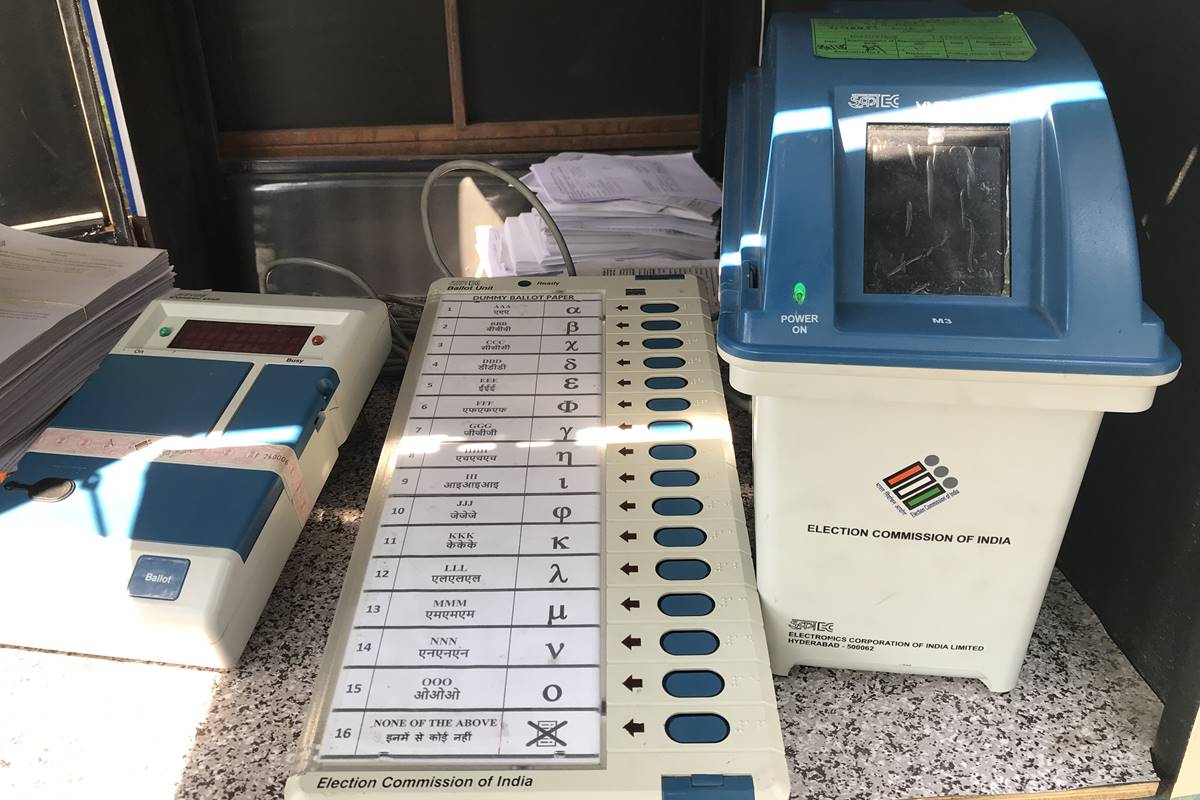ECI issues notification for 4th phase of Lok Sabha polls
In the fourth phase, polling will be held in 96 parliamentary constituencies (PCs) spread across 10 states and union territories (UTs).
EC has said EVMs and VVPAT machines will be used at all polling stations in the 2019 Lok Sabha elections

A dummy EVM and VVPAT machine used for training purpose. (SNS Photo)
The 2019 Lok Sabha elections dates are out. India is all set to elect the 17th Lok Sabha and the model code of conduct has come into force. The seven-phase polls will take place on 11 April, 18 April, 23 April, 29 April, 5 May, 12 May and 19 May, and the verdict will be out on 23 May. It has been declared already that the Lok Sabha elections will be held with electronic voting machines (EVMs), and a VVPAT machine will be attached with every EVM at all polling stations.
Voter Verifiable Paper Audit Trail or VVPAT machines, which have been in use during elections since 2017, help verify that the vote polled by a person has gone to the chosen candidate. With allegations of EVM tampering cropping up during every election, VVPAT machines are put up a second line of verification. The Election Commission of India assures that all EVMs are completely secure and tamper-proof, and can never register a wrong vote.
Advertisement
After a voter presses the button against the chosen candidate, the VVPAT machine gives instant feedback showing the vote has gone to the intended candidate. Though attached with the EVM, a VVPAT machine works as an independent system. It comes with a sealed drop box and a transparent display unit.
https://www.facebook.com/thestatesman1875/videos/386364838829518/?v=386364838829518
A VVPAT consists of a printer and a VVPAT Status Display Unit (VSDU) running on a 22.5 volts battery. The control unit and VSDU are kept with the presiding officer or the polling officer while the balloting unit and the printer are kept in the voting compartment.
According to the ECI, there will be 10.35 lakh polling stations in all to conduct the 2019 Lok Sabha polls and the Assembly elections to be held simultaneously in four states of Andhra Pradesh, Odisha, Sikkim and Arunachal Pradesh. The EC has said it will need 17.4 lakh VVPAT
machines besides 23.3 lakh balloting units and 16.35 lakh control units.
As you press the button against a candidate of your choice and cast your vote, a slip is printed on the VVPAT printer.
The printed slip contains the serial number, name and symbol of the candidate.
The slip displaying the information remains exposed behind a transparent window for 7 seconds.
The printed slip then automatically gets cut and falls in the sealed drop box of the VVPAT machine.
ECI places purchase order to manufacturers BEL and ECIL on 50:50 basis
The District Election Officer (DEO) is the custodian of EVMs and VVPATs under whose supervision all testing, checking and Assembly/Assembly segment wise allocation of EVMs & VVPATs are done
The first level checking of the units is done by the manufacturers. Representatives of recognised national and state political parties also participate in the process.
First randomisation of the EVMs and VVPATs is then done to allocate the units, which are subsequently stored in strong rooms
Once the list of contesting candidates is finalised, a second randomisation of the EVMs and VVPATs is done. The units are then allocated to polling stations for preparation or commissioning of the EVMs, which is done in the presence of candidates or their agents.
The prepared EVMs and VVPATs go back to the strong room in the presence of candidates or their agents.
Before polling, the strong rooms are reopened and the EVMs and VVPATs with election material are handed over to the polling parties, again in the presence of candidates or their agents.
Before the actual polling, the presiding officer conducts a mock poll at the polling station in the presence of polling agents of the contesting candidates.
After the mock poll, the data is cleared and the display unit and the drop box of the VVPATs are sealed with paper and thread seals.
One the polling gets over, the EVMs and VVPATs are escorted back to the strong room to be kept under 24 X 7 security of the returning officer concerned.
On the counting day, the strong rooms are opened and the counting of votes is done in the presence of candidates or their agents and ECI observers.
Once the process is over, the EVMs and VVPATs are sealed against and sent back to the strong rooms.
After the declaration of result, a period is 45 days is allowed to file an election petition if anyone as a complaint.
The data in the particular EVMs and VVPATs is retained till the final disposal of the petition, including appeal, if any.
The DEO can get the data and slips from EVMs and VVPATs cleared where no election petition is filed, after verifying the position once the period for filing a plea is over.
(Source: ECI)
Advertisement